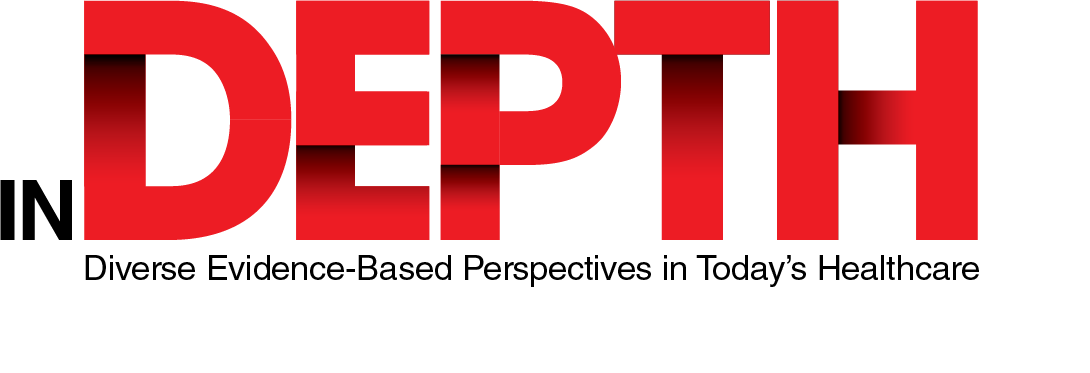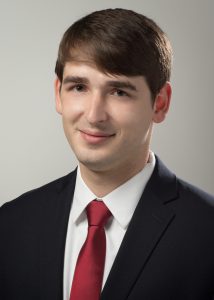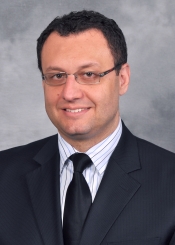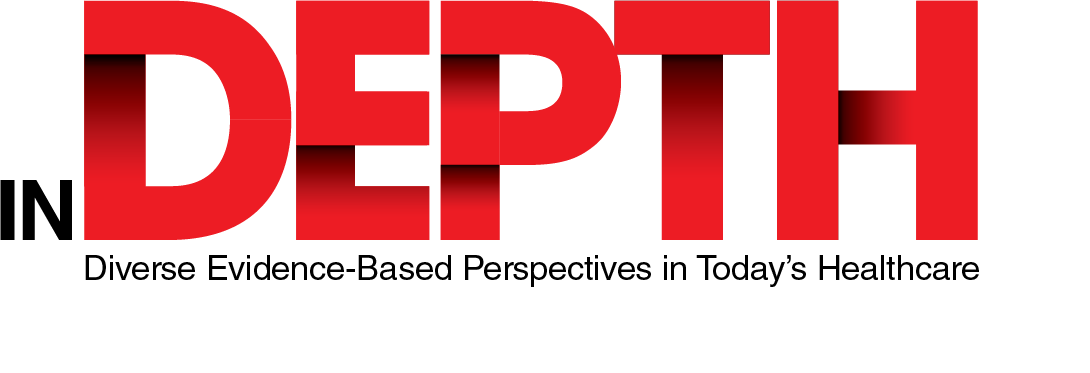
inDEPTH examines topics with perspectives from your colleagues through multiple lenses to illustrate the impact on their practice.
Learn more!
On February 24, 2022, Russia invaded Ukraine. And by March 14, the WHO declared that Ukraine health facilities were “stretched to the breaking point.” The United Nations have declared a humanitarian crisis of enormous proportions. Beyond hanging gold and blue flags of support, many physicians n the US have jumped into the fray, eager to help with their professional services.
For a recent Physician’s Weekly Podcast episode, we interviewed two Ukrainian-American doctors who have gone to Ukraine and delivered their expertise and services in addition to much needed supplies.
Dr. Oleg Turkot, Assistant Professor of Anesthesiology and Critical Care Medicine at Johns Hopkins Hospital, entered Ukraine on February 28 with two dozen portable ultrasound probes donated by the Butterfly Network, which can be connected to most mobile phones and being so portable, can be used at frontline hospitals. Using ultrasound to locate shrapnel, he compared most Ukrainian hospitals to a Trauma Bay in US hospitals, and he describes teaching doctors there on the ground how to utilize basic needle guidance techniques in chicken breasts.
Professor Gennady Bratslavsky, the Chair of the Urology Department, specializing in Urologic Oncology at Upstate SUNY in Syracuse, NY discusses how his wife, Katya, sold nearly $200K of her art to fund the purchase of two ambulances and the transport of tons of medicine by a military plane. He tells how, after a 20-hour trip in an ambulance packed with supplies from Poland, showing up at the Ukrainian border with his American passport, made the border patrol think he was crazy.
Below, we summarize the perspectives of Drs. Turkot and Bratslavsky. For their full stories, listen to PW Podcast episode in the player above!
inDEPTH Perspectives from Our Contributors
Access to Care: Portable Ultrasound - Oleg Turkot, MD

Oleg Turkot, MD, Assistant Professor of Anesthesiology and Critical Care Medicine, Johns Hopkins Hospital
My colleagues and I began work in Ukraine in 2018 with care for women and children in maternity hospitals. When the war started, one of the biggest changes was the acute need for reasonable diagnostic equipment that may be usable in case of lack of power. Ukrainian anesthesiologists don’t have access to ultrasound or necessary training. So, we considered, “What can we do and what sort of impact can we make in a very short period with something that’s portable?” Ultrasound became our go-to modality. With help from the Butterfly Network, we were able to bring additional probes into the country with an initial goal to provide baseline training and have local trainers do the additional steps with further development on the ground. Plus, with Butterfly, we would be able to do virtual consults and develop things further to start expanding to new locations. Then obstetricians we worked with stated that now women can’t leave their houses without fear of being shot or shelled. Now, we have the ability to visit women at home. Ukrainian hospitals are structured with large steps; you don’t have the ability to move ultrasound machines between different portions of the hospital. Now, with portable ultrasounds, we’re able to take the machines where the patients are instead of, for example, bringing a patient up to the third story of a building where the higher up you go, the more chances a blast will blow out the windows and damage everybody inside. Because the items were so easy to transport, we’re actually able to bring them toward direct frontline hospitals, which often work in situations with no electricity. Surgeons are utilizing ultrasound to locate shrapnel, because CAT scanners are absolutely unheard of in any frontline hospital. Sadly, you can’t just give somebody a probe an automatically they do everything. We started with things that are lifesaving and tailored things based on individual skill levels. And just because somebody can view a relatively protocolized scan doesn’t mean they’ll be able to recognize every single piece. And that’s where provider-to-provider feedback comes in. We will text pictures, talk, and be able to compare what they’re seeing with likely what it is. And we use that as a continual educational model. Our goal is to train them to be able to identify items that can be lifesaving.
A significant portion of the patients come in with GSWs, shrapnel, and extensive burns. There’s also a significant displaced population. Toward Eastern Ukraine, you see a lot more trauma. Toward Western Ukraine, you tend to see more chronic illness that has been unmanaged for a couple months. I’m a Ukrainian-trained physician. I went through all my medical school there, and I never saw a single GSW. We’re a peaceful country. Nobody owns guns. The idea of working during your typical day and the building next to you blows up really never crossed most of our minds. Today, every major city in the country has had at least one or two rocket attacks. There’s also been a massive hit to hospital infrastructure. About one in six hospitals in the country, as of two days ago (May 16, 2022), has been attacked. One in 15 has been completely leveled to the ground. There are large parts of the country where there are no undamaged hospitals.
I think the biggest thing that most people in the US don’t understand is that Ukraine is a low-middle income country. Ukraine’s GDP per capita is possibly comparable to El Salvador. That’s where they started and that’s the level of funding they have. And yet, for example, their levels of maternal mortality are lower than that in the US. in Ukraine, there’s a shortage of equipment but a plentiful supply of people who are willing to work. They do a huge amount with very little. And that means that every single little bit that we give them pays dividends.
We are always looking for additional support. One of the important aspects that we find is that whenever there’s a large disaster, typically support happens immediately and then it slowly teeters off. If it’s possible to continue that support further, you’re able to go really far with those limited resources. The organization that I primarily work with is Kybele, and we would love support for the mission that we’re doing. A lot of US physicians want to come in and provide direct medical care. At this point, it’s not the highest priority and it’s not the thing that pays the most dividends. At the same time, providing education and allowing people in the country to work better really has been one of the cornerstones of our project from the beginning; small conversations, small changes in how people do things, allow people to take care of themselves, and that’s what creates sustainable change as compared to coming in for a week or two and doing 150 surgeries or taking care of a lot of people in a primary setting. If you compare that to creating just one new doctor who’s going to stay in the country, that’s going to be more important.
Access to Care: Medications, Ambulances & Basic Needs - Gennady Bratslavsky, MD

Gennady Bratslavsky, MD, Professor and Chair, Department of Urology, Professor of Biochemistry and Molecular Biology, Director, Prostate Cancer Program Phillip Capozzi M.D. Endowed Professor of Urology, SUNY Upstate Medical University
I am originally from Kiev, Ukraine. A couple days after Russia invaded Ukraine on February 24, my friend—who I grew up with in Kiev and now is a US citizen like me—and I started a small company, Help Free Ukraine, to gather resources, money, and whatever we could to support Ukraine. My wife is an artist and she has sold more than $200,000 worth of her own paintings and directed every penny toward Ukraine. With that and other money raised from family and friends, we went into Ukraine to personally deliver the goods we purchased with a focus on a medical mission and relief. We bought two ambulances, hundreds of individual first aid kits that can be used for serious wounds on the front lines, satellite phones to help first responders and hospitals communicate when the Internet and cell connections are down, and gas masks with additional filters of NBC class (nuclear, bacteriologic, and chemical). The highlight for me was driving the ambulance full of goods for a trip that normally takes 5.5-6 hours; it took me 20 hours to get through the border, all the customs with appropriate paperwork. It was quite an experience driving an ambulance wit ha standard transmission for 20 hours and getting through military checkpoints, showing them my American passport, and hearing them say “What are you doing here, are you crazy?” It gave me more motivation to just do it. The need for medical relief is enormous. Part of this trip was also working with World of Connections and Tunnel to Towers to deliver close to 65 tons of medications and very basic medical supplies. Regardless of when the war stops, the medical needs are enormous. As physicians, all we can do is support by whatever means we have. As a urologic oncologist, I know how many people are not getting their treatment. Several pharmaceutical companies have offered large donations, but those require enormous logistical solutions. The medications we supplied needed a military plane to bring them over, trucks, warehouses in Ukraine, a distribution center, drivers, etc. But with the help of several nonprofit organizations, we were able to secure, hopefully, an second cargo plane to bring an additional 40 or so tons of medication. Whatever people have, whatever connections they have, whatever access to medications they have, if they want to help, they donate at helpfreeukraine.com. I will always make myself available, as this is a fabric of the modern society against an evil that I think we’re all trying to survive.
Got a related perspective of your own to share? Just complete the simple form below!


